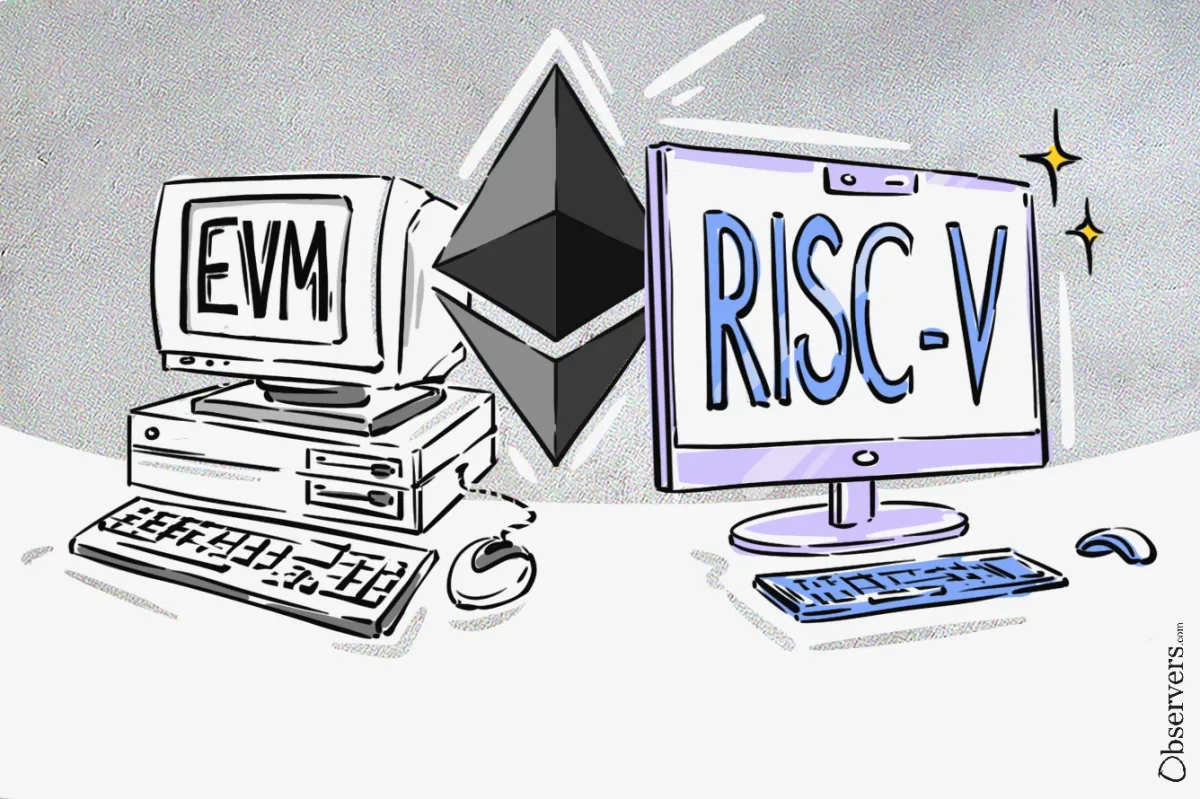
Vitalik Buterin has introduced what he describes as a “radical idea for the future of the Ethereum execution layer.” The Ethereum co-founder suggests replacing the Ethereum Virtual Machine (EVM) with RISC-V, a low-level virtual machine language widely used outside the blockchain space.
The idea gained further traction when when Ethereum developer Rick Dudley suggested running the Beacon Chain on RISC-V and subsequently operating the EVM within it. Buterin responded positively, noting that this aligns with Ethereum's roadmap for formal verification and recommended that Dudley coordinate with Alexander Hicks, who oversees Ethereum's formal verification and artificial intelligence efforts.
Supporters of RISC-V argue that it is faster, more efficient, and easier to optimize due to the wide availability of tools, compilers, and hardware support. A switch to RISC-V could reduce gas costs, improve performance, and make development more accessible, potentially attracting developers from outside the blockchain ecosystem. It could also enhance Ethereum’s interoperability with other systems.
One major advantage of RISC-V is its open design, which allows for specialized hardware implementations such as ASICs and FPGAs. These could accelerate core logic directly at the hardware level, paving the way for significant Layer 1 throughput (TPS) improvements.
If implemented, RISC-V would allow developers to write smart contracts in a wider range of programming languages, such as Rust, beyond Ethereum’s current primary language, Solidity. Importantly, Buterin emphasized that legacy EVM contracts would continue to function and remain fully interoperable with new RISC-V-based contracts.
The Ethereum Virtual Machine (EVM) was originally developed during Ethereum’s early design phase in 2014, prior to the network's official launch in 2015. Spearheaded by Ethereum co-founders like Gavin Wood and Vitalik Buterin, the EVM was designed from the ground up as part of a new blockchain protocol, with the flexibility to execute arbitrary smart contract logic in a deterministic and isolated environment.
Because the EVM was introduced before the Ethereum network went live, developers had the advantage of building and refining it in a relatively controlled setting. In contrast, migrating to RISC-V now would mean replacing Ethereum’s execution layer on a live, global, and heavily utilized platform — a vastly more complex undertaking.
The proposal has sparked debate within the Ethereum developer community. Critics have raised both technical and ideological concerns. Some question Ethereum’s current priorities—whether the focus should be on optimizing Layer 1 performance or continuing to empower Layer 2 solutions:
“This would be great for L1 execution, but that lowers the value add of L2s, competing against ourselves, and doesn’t add much value to that roadmap in exchange for a huge technical lift.”
Others argue that, while RISC-V appears promising in theory, no RISC-V-based virtual machine is currently production-ready, and the complexity of building one is significant.
“The EVM has been a stable, battle-tested environment for approximately nine years, while RISC-V lacks substantial real-world experience in blockchain execution contexts.”
Also, if Ethereum moves away from EVM while other EVM-compatible chains (like BNB Smart Chain, Polygon, Avalanche C-Chain, Fantom, etc.) continue using it, they might lose some of their tight coupling with Ethereum’s evolution. This could fragment the ecosystem unless a standardized RISC-V virtual machine is adopted across multiple chains.
It is worth noting that a few blockchain projects are already experimenting with RISC-V as a virtual machine. Polkadot, for instance, is developing its own RISC-V implementation called PolkaVM—but it has undergone substantial custom development to ensure it is secure and suitable for blockchain use.
Despite the bold nature of the proposal, it has not generated much excitement among investors. ETH continues to hover near its lowest price point in the past year.
As of now, Vitalik Buterin's proposal to integrate RISC-V into Ethereum's execution layer remains in the exploratory and research phase. There has been no formal Ethereum Improvement Proposal (EIP) submitted, nor is there an active vote scheduled within Ethereum’s governance processes.
This proposal is part of a broader initiative to enhance Ethereum's performance and security. However, transitioning to a RISC-V-based execution environment would be a significant undertaking, requiring extensive research, development, and community consensus. As such, it's currently a topic of discussion and investigation rather than an imminent change.

